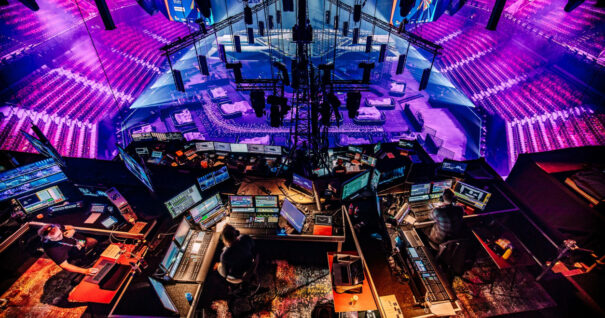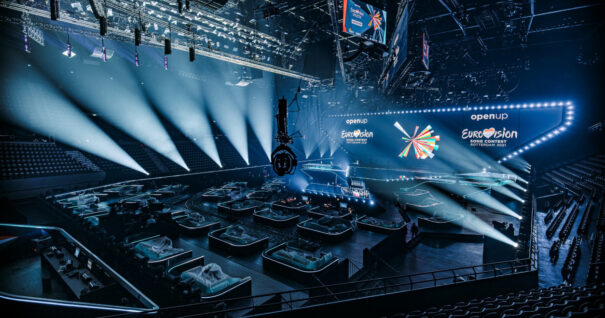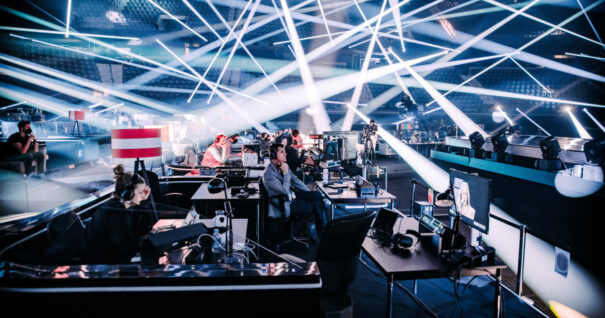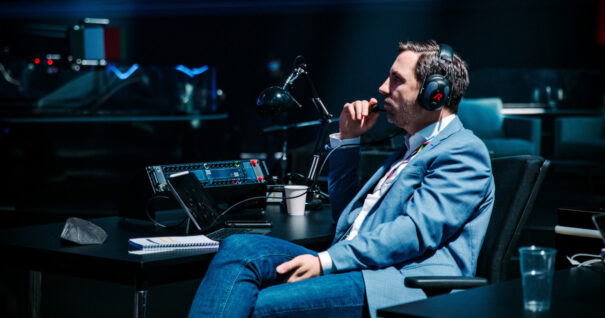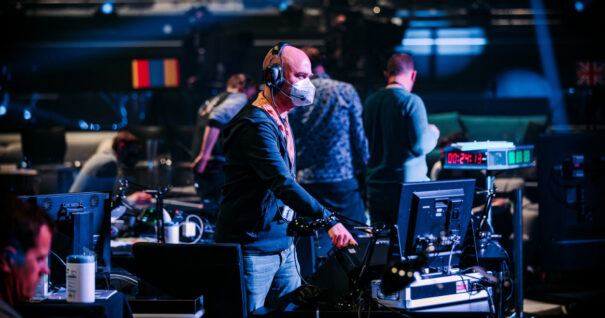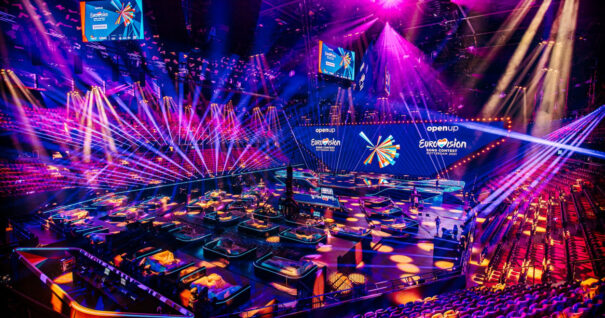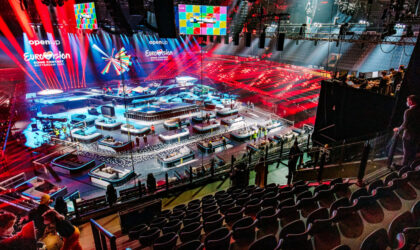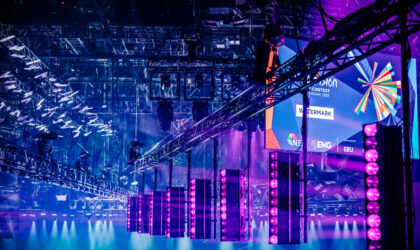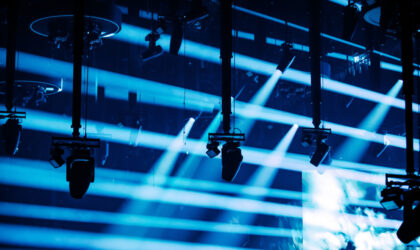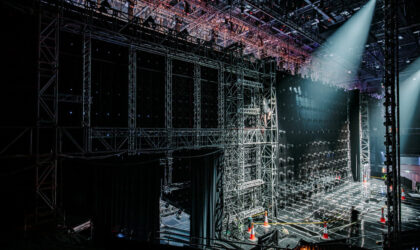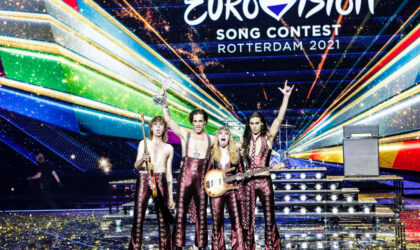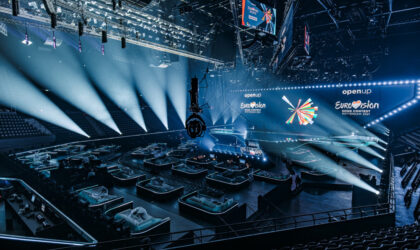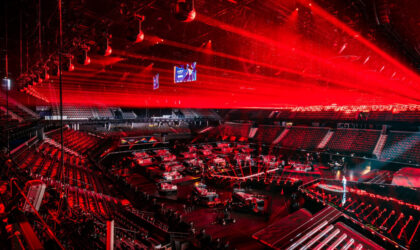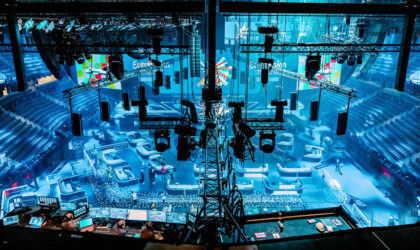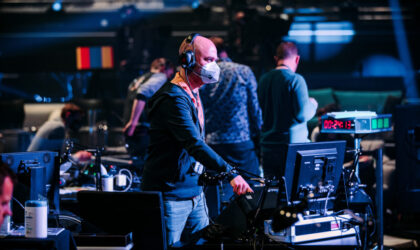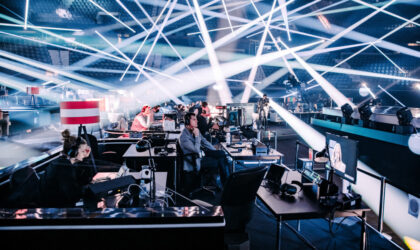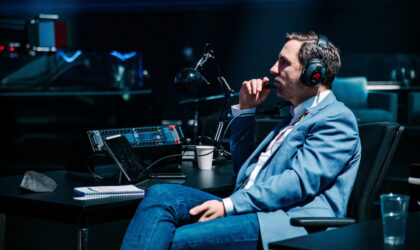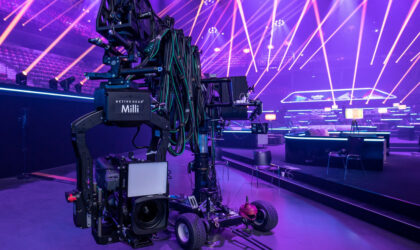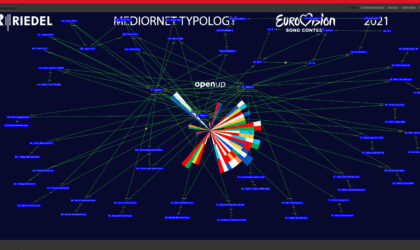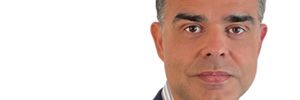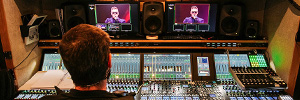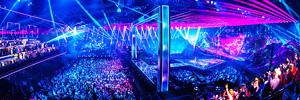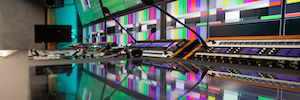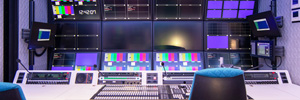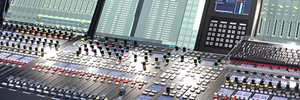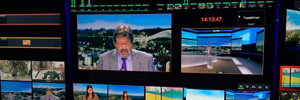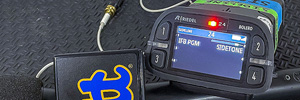5 wichtige Säulen, die die Produktion des Eurovision Song Contest 2021 möglich gemacht haben
Der Eurovision Song Contest ist eines der führenden Fernsehereignisse in Europa. Jedes Jahr zieht es Millionen von Zuschauern auf dem alten Kontinent an. Die Herstellung ist mit einem hohen Aufwand sowohl in der Planung als auch in der Ausführung verbunden und wird stets von zahlreichen hochmodernen Technologien begleitet. Thurid Wagenknecht, Programmmanager Global Events und Yung-Min Lee, Senior Project Manager, von Riedel, teilen Sie den Lesern von Panorama Audiovisual 5 Säulen der technischen Umsetzung des Eurovision Song Contest durch eine Videokonferenz aus Rotterdam Ahoy, dem Veranstaltungsort der Ausgabe 2021 des Festivals, mit.
Möglicherweise war diese letzte Eurovisionsgala eine der am meisten gefeierten seit langem. Mit dem Impuls von gemeinnützige Organisation, NOS, Avrotros und EBU. Vereinigt und NEP waren für die technische Koordination der Veranstaltung verantwortlich. Beide Unternehmen entschieden sich, auf Riedel für mehrere Aufgaben, wie z.B. Funkverkehrdas Verwaltung audiovisueller Signale für die Ausstrahlung und Verbreitung von Bildern in der Ahoi-Arena; oder die Entwicklung eines Komplexes Akkreditierungssystem, die direkt durch das Ergebnis der 26.000 Covid-19-Tests an alle Mitarbeiter.
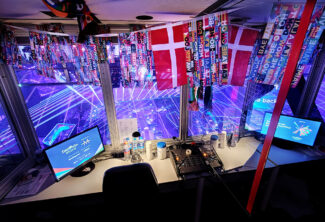 24 Kameras waren Teil der Inszenierung: sieben rund um die Bühne, eine Schiene vor der Bühne, eine Dachreling, zwei Kräne, ein Doppeldolly, ein Einzeldolly, ein 2D-Seilzug, ein 1D-Seilzug, zwei Steadicams, ein Festkopf- und zwei Schultercamcorder. Diese Erfassungsgeräte werden zusammen mit 130 Video-Feeds, 140 Sprechstellen, 75 Mikrofone, 1800 Leuchten, fünf mobile Einheiten, ein technisches Einsatzzentrum, drei Begleitfahrzeuge und 60 EVS Kanäle, diente dazu, ein Signal zu formen, das in ganz Europa, Australien und den USA zu sehen war (via Pfau); mit eingehenden Verbindungen aus 40 verschiedenen Ländern. Das war keine leichte Aufgabe, denn Thurid Wagenknecht und Yung-Min Lee erzählen.
24 Kameras waren Teil der Inszenierung: sieben rund um die Bühne, eine Schiene vor der Bühne, eine Dachreling, zwei Kräne, ein Doppeldolly, ein Einzeldolly, ein 2D-Seilzug, ein 1D-Seilzug, zwei Steadicams, ein Festkopf- und zwei Schultercamcorder. Diese Erfassungsgeräte werden zusammen mit 130 Video-Feeds, 140 Sprechstellen, 75 Mikrofone, 1800 Leuchten, fünf mobile Einheiten, ein technisches Einsatzzentrum, drei Begleitfahrzeuge und 60 EVS Kanäle, diente dazu, ein Signal zu formen, das in ganz Europa, Australien und den USA zu sehen war (via Pfau); mit eingehenden Verbindungen aus 40 verschiedenen Ländern. Das war keine leichte Aufgabe, denn Thurid Wagenknecht und Yung-Min Lee erzählen.
1. 365 Tage Vorbereitung
Eurovision passiert nicht über Nacht. Tatsächlich Yung-Min Lee geht sogar so weit zu sagen, dass es notwendig ist, "mehr als 365 Tage". Es gibt umfangreich Planung Dazu gehört auch, darüber nachzudenken, welche Art von Lösungen das Format benötigen könnte, bevor die Abstimmung mit den Produktionsfirmen beginnt. Diese Gespräche finden in der Regel rund um Oktober, acht Monate vor der Veranstaltung.
In diesem Jahr war der Prozess sogar noch länger, da die Ausgabe 2020 aufgrund der durch die Pandemie verursachten globalen Situation verschoben wurde. Es ging um Herausforderungen in den Bereichen Gesundheit und Prävention, die zu einem Transformation der ursprünglich geplanten technischen Planung für Rotterdam Ahoi selbst. So hat der Installations-, Montage- und Prüfprozess eine Eineinhalb Monate. "Die Produktion im Ahoy hat am 6. April begonnen", sagt Thurid Wagenknecht.
Bei der Ankunft im Pavillon stellte das Team verschiedene Teile der Produktion je nach Bedarf, der in jeder Phase des Projekts auftrat. Wagenknecht erklärt, dass die erste Anforderung darin bestand, Das Akkreditierungssystem und der Funkverkehr über TETRA. Bald darauf erfolgte die Installation der Glasfaser-Verkabelung begann mit der Erstellung der Gesamte Signalverteilung Infrastruktur. Der letzte große Schritt war die Interkommunikationssystem, die in der Regel bis kurz vor der Ankunft der verschiedenen Delegationen wartet, um die Darbietungen zu vervollständigen, die im Halbfinale und im großen Finale zu sehen sein werden. Kurz gesagt, die Installation dauert zwischen drei und vier Wochen; die Proben, eine weitere vierzehn Tage.
2. Erstmaliger Einsatz von Geräten
Die Produktion des Eurovision Song Contest 2021 entwickelt sich von Jahr für Jahr. Wie Wagenknecht Lachende Kommentare, die Veränderungen kommen, wenn man "älter und weiser" wird. Arbeiten an Eurovisionin seinen Worten eine "unendliche Lernkurve" mit sich bringt, die jede Produktion anders macht. Es gibt Elemente, die bleiben, aber andere, die werden neu gedacht um dem europäischen Publikum die bestmögliche Show zu bieten.
Lee Details, die im Vergleich zu den Tel Aviv Ausgabe (2019), in der die Sprechfelder über AES3 ("wie schon in den letzten 15 Jahren"), diesmal ein AES67 Netzwerk eingerichtet wurde. Um ältere Panels weiter verwenden zu können, Riedel NSA Netzwerkadapter wurden integriert.
Weitere Schlüsselelemente waren die neuen 32-Tasten Artikel-Nr.: RSP-1232 Panels, "eine Verbesserung gegenüber dem RCP-1028" aufgrund ihrer neuen Tasten, Farben und Ringe; Künstler-1024 Knoten und 60 Bolero Gegensprechanlagen, die Wagenknecht lachend als Statussymbol für die Besatzungsmitglieder anerkennt (je mehr Knöpfe und Gegensprechanlagen, desto mehr Verantwortung und je höher der Status); und eine breite Palette von MediorNet IP-Produkte, wie z. B. die Myon für die Audiozeilen der Kommentatoren oder Verschmelzung für die Videoverteilung in der Regie für die Kommentatoren.
Riedel war auch verantwortlich für die komplette Ausstattung der Kommentatorenstationen sowie für die Kommunikation mit den Kontrollräumen in den einzelnen Ländern, die die EBU übertragen.
3. 48-Stunden-Akkreditierungen
Ein entscheidender Punkt, der von dem Team unter der Leitung von Wagenknecht war Akkreditierungen. Konkret hat Riedel das Frontend des gesamten Managementsystems auf Basis von RFID (Radio Frequency Identification) abgesegnet.
Aufgrund der Pandemie und der geltenden Schutzmaßnahmen war der Zugang auf 48 Stunden beschränkt. Das bedeutete, dass nach 48 Stunden, wenn es keine neuen Covid-19 Prüfung, die eine negatives Ergebnis, der Techniker, das Mitglied der Delegation oder der ausübende Künstler konnte den Veranstaltungsort nicht wieder betreten.
Einer der komplexesten Arbeitsabläufe bestand darin, dass eine Person, sobald sie das Covid-19-Testzentrum betritt, ihre gesamte Akkreditierung Komplett deaktiviert. Auf diese Weise werden sie bis zum erwarteten negativen Ergebnis präventiv unter Quarantäne gestellt. Laut Wagenknecht, diese Prozesse umfassen zahlreiche Software- und Hardwareelemente, so dass die Koordination "komplex" war.
4. Die Herausforderung von Covid-19
Die Schaffung eines Perimeters bedeutete bisher nicht die normale Produktion im Produktionsalltag. Wie Wagenknecht erklärt, dass jede einzelne der von den Behörden empfohlenen Maßnahmen in Bezug auf die Distanzierung innerhalb des Standorts eingehalten wird.
Es gibt eine eineinhalb Meter Trennung zwischen den einzelnen Stationen, FFP2 Masken sind verpflichtend, eine Großes Sicherheitsteam ist ausschließlich darauf bedacht, dass die Maßnahmen eingehalten werden, und die Stationen mit Desinfektionsmittel und PSA sind über das gesamte Operations Center verteilt – oder besser gesagt, als Wagenknecht drückt es aus, "alle drei Meter". Diese außergewöhnlichen Maßnahmen haben die für die Produktion zur Verfügung stehende Fläche vergrößert, was wiederum dazu geführt hat, dass die Kommunikationsausrüstung verstärkt werden musste, um die gesamte Fläche abzudecken.
Ebenso wird die EBUmussten sich die Host Broadcaster und Produktionsteams mit mehreren positiven Fällen auseinandersetzen, die sich glücklicherweise außerhalb des Perimeters ereigneten. Dieser Umstand betraf einen Teil der Isländisch Delegation oder Duncan Laurence, Gewinner der Ausgabe 2019. Glücklicherweise konnten sie einen Schnappschuss ihrer Proben aufnehmen, der während des großen Finales live übertragen wurde. Es gab auch Positives im Live-Produktionsteam, Wagenknecht erzählt, obwohl sowohl NEP als auch United diese Möglichkeit voraussahen und von Anfang an bis zu zwei Personen für jede Position hatten.
Die Distanzierungs- und Präventionsmaßnahmen innerhalb der Blase waren außergewöhnlich, aber auch effektiv. Vom 26,000 durchgeführte Prüfungen, Nur 0,06 % waren positiv.
5. Kontinuierliche Weiterentwicklung der Produktion
Wofür ist Wagenknecht Eine der "schwierigsten Produktionen" im Fernsehen findet angesichts der Anzahl der beteiligten Personen und der Komplexität ihrer Organisation jedes Jahr mehrere Möglichkeiten, sich zu verbessern. Auf Riedels Seite, Lee Details, dass neue Verbesserungen wie MicroN UHD möglicherweise integriert werden, falls man sich für eine Ausstrahlung entscheidet UHD (obwohl er es nicht für klar hält, da "viele Sender nicht bereit sind, in diesem Format zu senden"); oder neue Erweiterungsfelder für Riedels RSPs.
Trotzdem ist es noch zu früh, um zu wissen, wie die technische Umsetzung im Jahr 2021 aussehen wird. Italien, das Land, in dem der Eurovision Song Contest 2021 stattfinden wird, MåneskinDer Sieg des Unternehmens wird entscheiden, welche Art von Produktion gebaut werden soll und welche Art von Ausrüstung sie einsetzen wird. In jedem Fall Lee Er ist zuversichtlich: Er ist sich sicher, dass sie in der Lage sein werden, sich an alle Bedürfnisse auf der Ebene der Signalverteilung oder Kommunikation anzupassen, die ihnen in Zukunft vorgelegt werden.
Ein Bericht von Sergio Julián Gómez
Fotogalerie
(Klicken Sie auf ein beliebiges Foto, um das Karussell zu starten -scrollen Sie nach links und rechts, indem Sie auf den Pfeil klicken-.)
Hat Ihnen dieser Artikel gefallen?
Abonnieren Sie unsere Newsletter Und es wird Ihnen an nichts fehlen.



